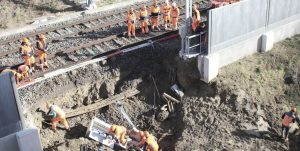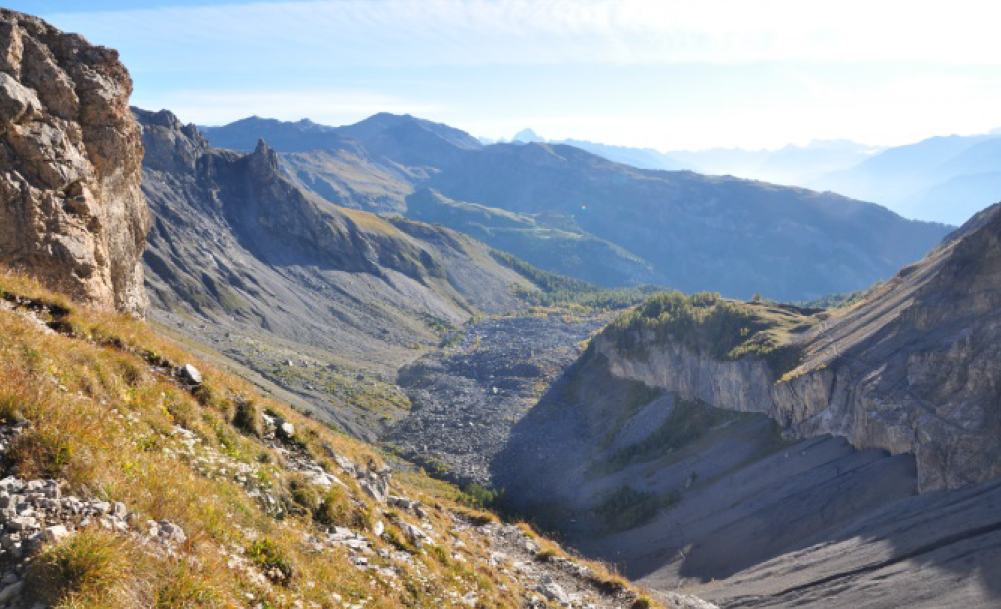Andrea Pedrazzini
Director: Prof. Michel Jaboyedoff
Jury: Prof. Torsten Venneman, Dr. Marc-Henri Derron, Dr. Federico Agliardi, Prof. Masahiro Chigira, Prof. Giovanni Crosta
Rock slope instabilities such as rock slides, rock avalanche or deep-seated gravitational slope deformations are widespread in Alpine valleys. These phenomena represent at the same time a main factor that control the mountain belts erosion and also a significant natural hazard that creates important losses to the mountain communities. However, the potential geometrical and dynamic connections linking outcrop and slope-scale instabilities are often unknown. A more detailed definition of the potential links will be essential to improve the comprehension of the destabilization processes and to dispose of a more complete hazard characterization of the rock instabilities at different spatial scales.
In order to propose an integrated approach in the study of the rock slope instabilities, three main themes were analysed in this PhD thesis: (1) the inventory and the spatial distribution of rock slope deformations at regional scale and their influence on the landscape evolution, (2) the influence of brittle and ductile tectonic structures on rock slope instabilities development and (3) the characterization of hazard posed by potential rock slope instabilities through the development of conceptual instability models.
To prose and integrated approach for the analyses of these topics, several techniques were adopted. In particular, high resolution digital elevation models revealed to be fundamental tools that were employed during the different stages of the rock slope instability assessment. A special attention was spent in the application of digital elevation model for detailed geometrical modelling of past and potential instabilities and for the rock slope monitoring at different spatial scales. Detailed field analyses and numerical models were performed to complete and verify the remote sensing approach.
In the first part of this thesis, large slope instabilities in Rhone valley (Switzerland) were mapped in order to dispose of a first overview of tectonic and climatic factors influencing their distribution and their characteristics. Our analyses demonstrate the key influence of neotectonic activity and the glacial conditioning on the spatial distribution of the rock slope deformations. Besides, the volumes of rock instabilities identified along the main Rhone valley, were then used to propose the first estimate of the postglacial denudation and filling of the Rhone valley associated to large gravitational movements.
In the second part of the thesis, detailed structural analyses of the Frank slide and the Sierre rock avalanche were performed to characterize the influence of brittle and ductile tectonic structures on the geometry and on the failure mechanism of large instabilities. Our observations indicated that the geometric characteristics and the variation of the rock mass quality associated to ductile tectonic structures, that are often ignored landslide study, represent important factors that can drastically influence the extension and the failure mechanism of rock slope instabilities.
In the last part of the thesis, the failure mechanisms and the hazard associated to five potential instabilities were analysed in detail. These case studies clearly highlighted the importance to incorporate different analyses and monitoring techniques to dispose of reliable and hazard scenarios. This information associated to the development of a conceptual instability model represents the primary data for an integrated risk management of rock slope instabilities.


